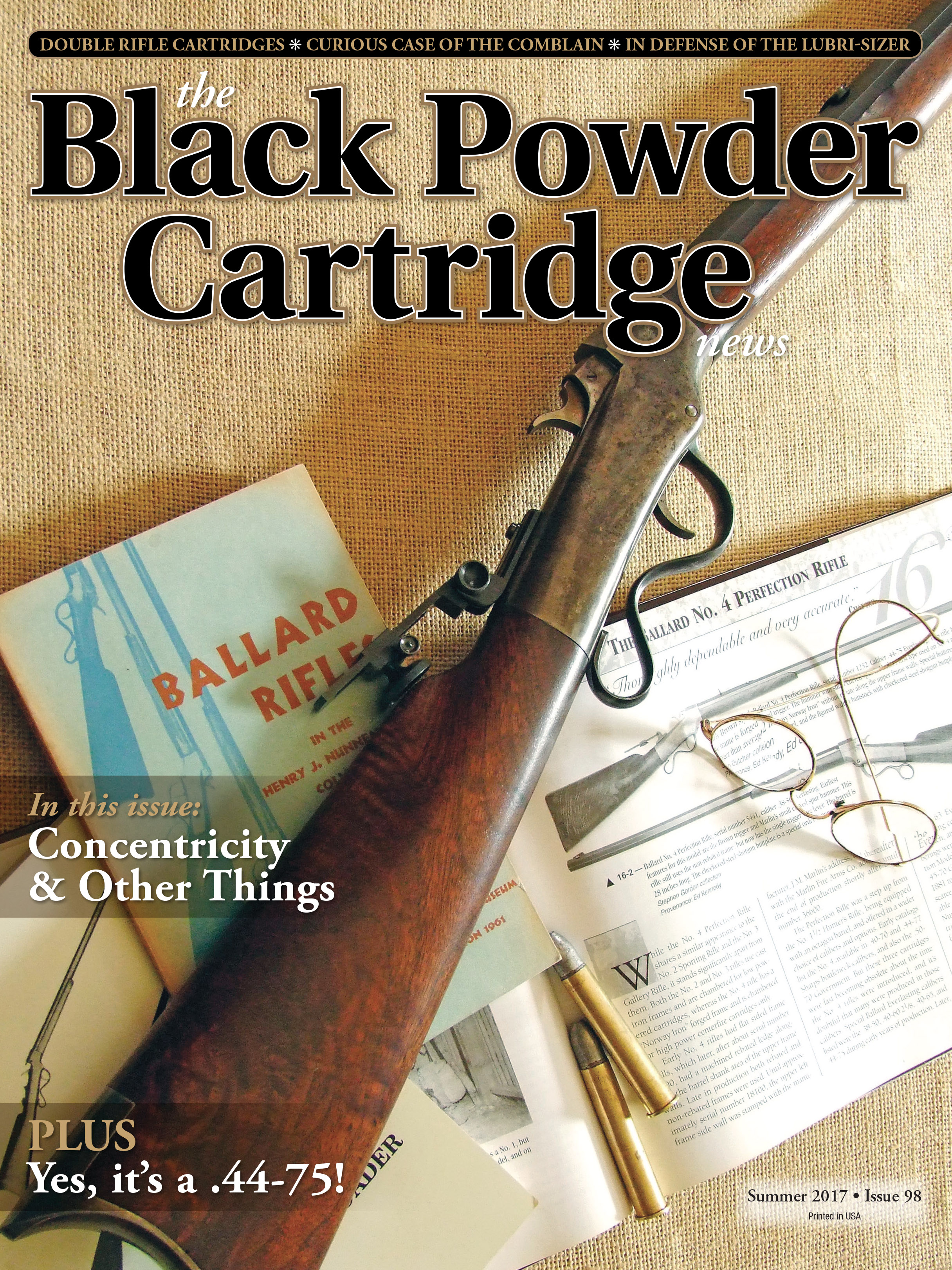New Bullet for the .44 Colt
feature By: Mike Nesbitt | June, 17
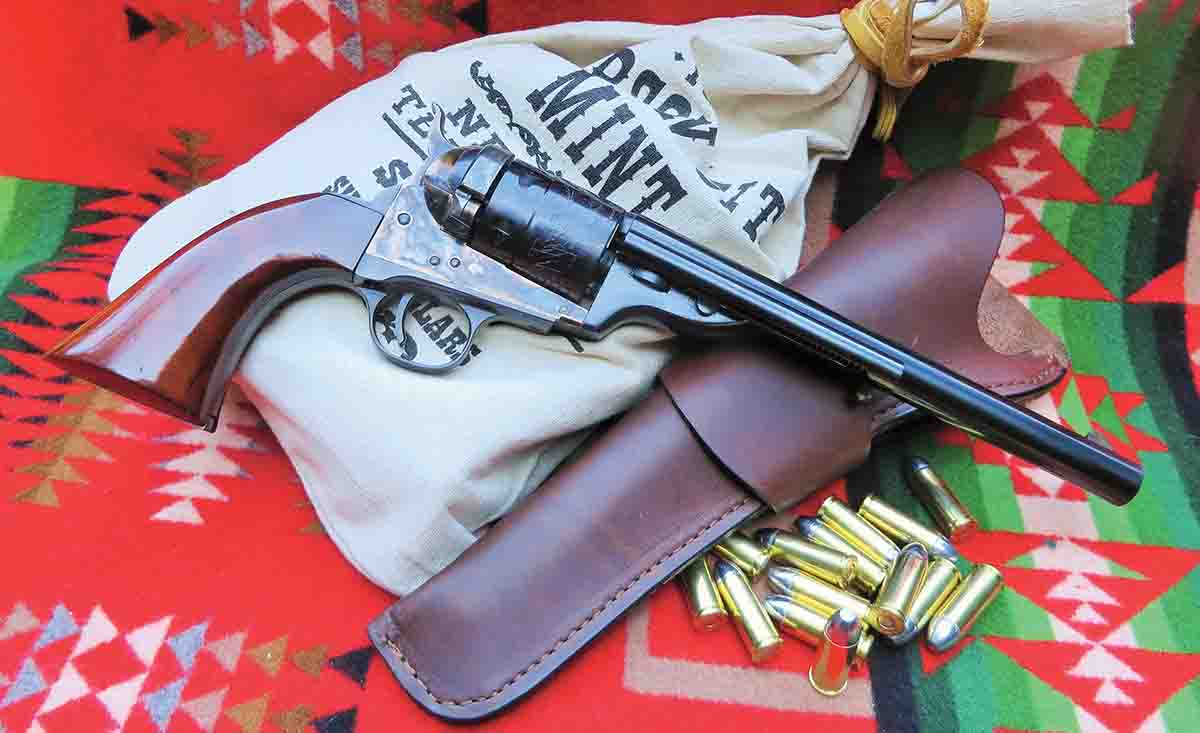

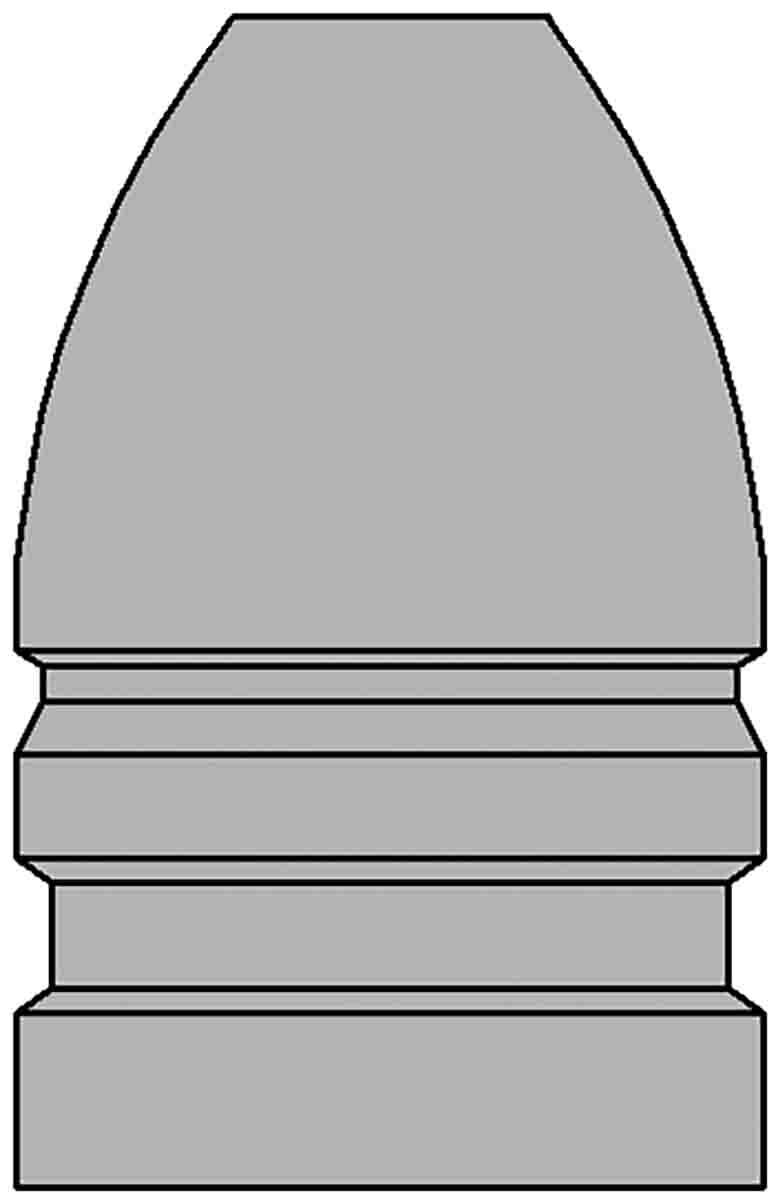
That’s when Tom Ellis at Accurate Molds was contacted. He took my description of the bullet I wanted and turned it into his #43-220N. (Would you suppose that “N” stands for Nesbitt?) This, in my opinion, has the look of a slug Colt might have used if its old .44 had been updated, back in those early years, to be used with an inside lubricated bullet. This new bullet weighs 220 grains, which is in the ballpark for the old .44, when cast with a 30-1 alloy.
The new bullet looks rather ‘Colt-ish’ if you will allow me to put it that way. It has a fairly long, rounding nose that ends with a .018-inch flatpoint. And its design lends itself to black-powder shooting quite well.
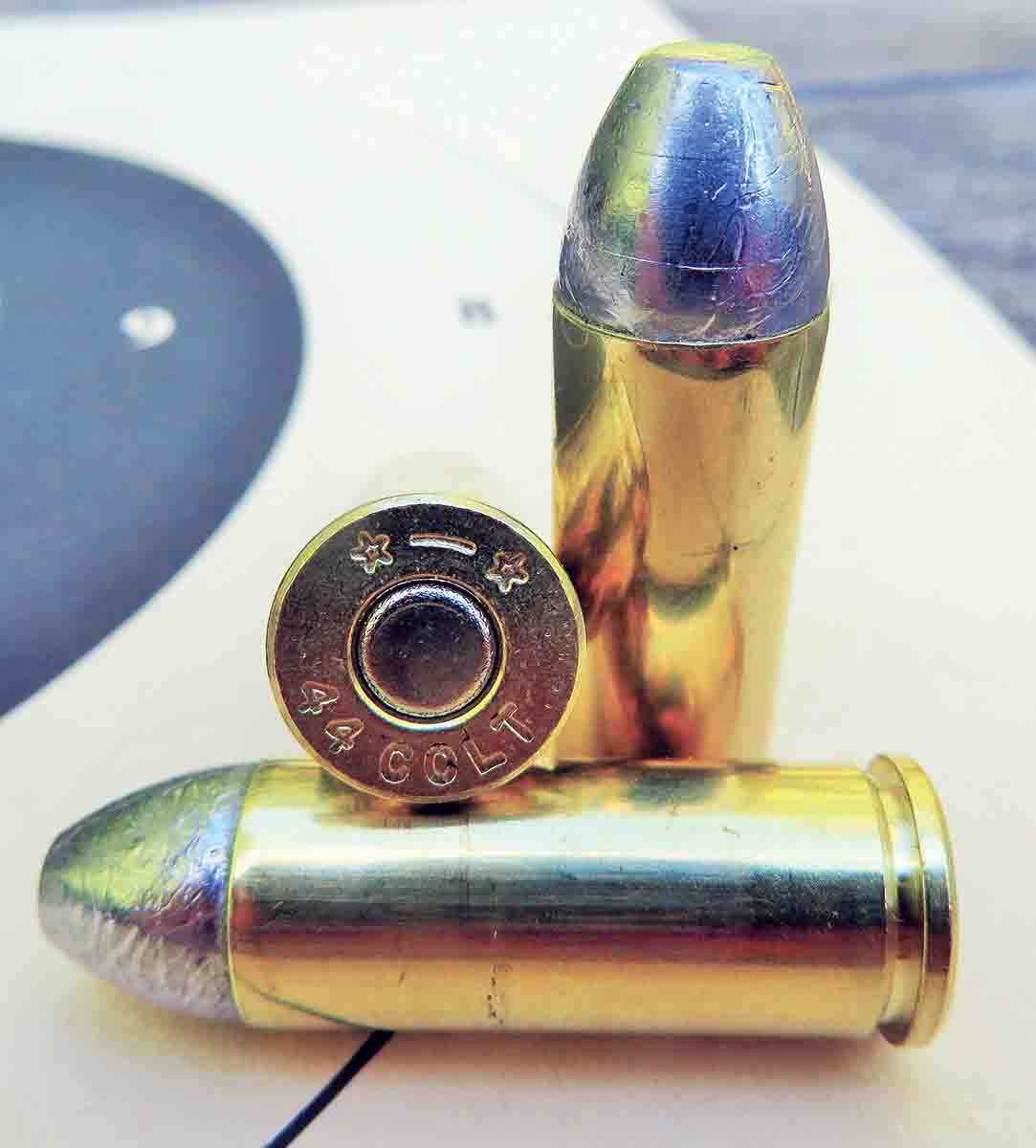
The overall length of this bullet is .675 inch and more than half of that length, .375 inch, is ahead of the crimp groove. That leaves only .300 inch below the crimp groove, which gets seated into the cartridge case. This means the rather shallow seating of the bullet will not require very much compression with black-powder loads. My use of 25 grains of powder, usually GOEX’s Olde Eynsford, fills the case to about .20 inch below the mouth of the case and that gives .10 inch of compression when the bullet is seated. No other steps for compression are taken, just the seating of the bullets over the powder with no wads.
Some general handloading comments might be of value. To load the .44 Colt cartridges, a set of Lee dies was obtained for the .44 Russian cartridge and then simply adjusted for the somewhat longer .44 Colt cartridge. Brass by Starline is generally available, and a good quantity of that was bought from Buffalo Arms Company. A special shellholder is not needed, because the Starline .44 Colt brass fits the RCBS No.2 shellholder, the good old .30-30 size, just perfectly. You might say that nothing special was needed to reload these historic cartridges.
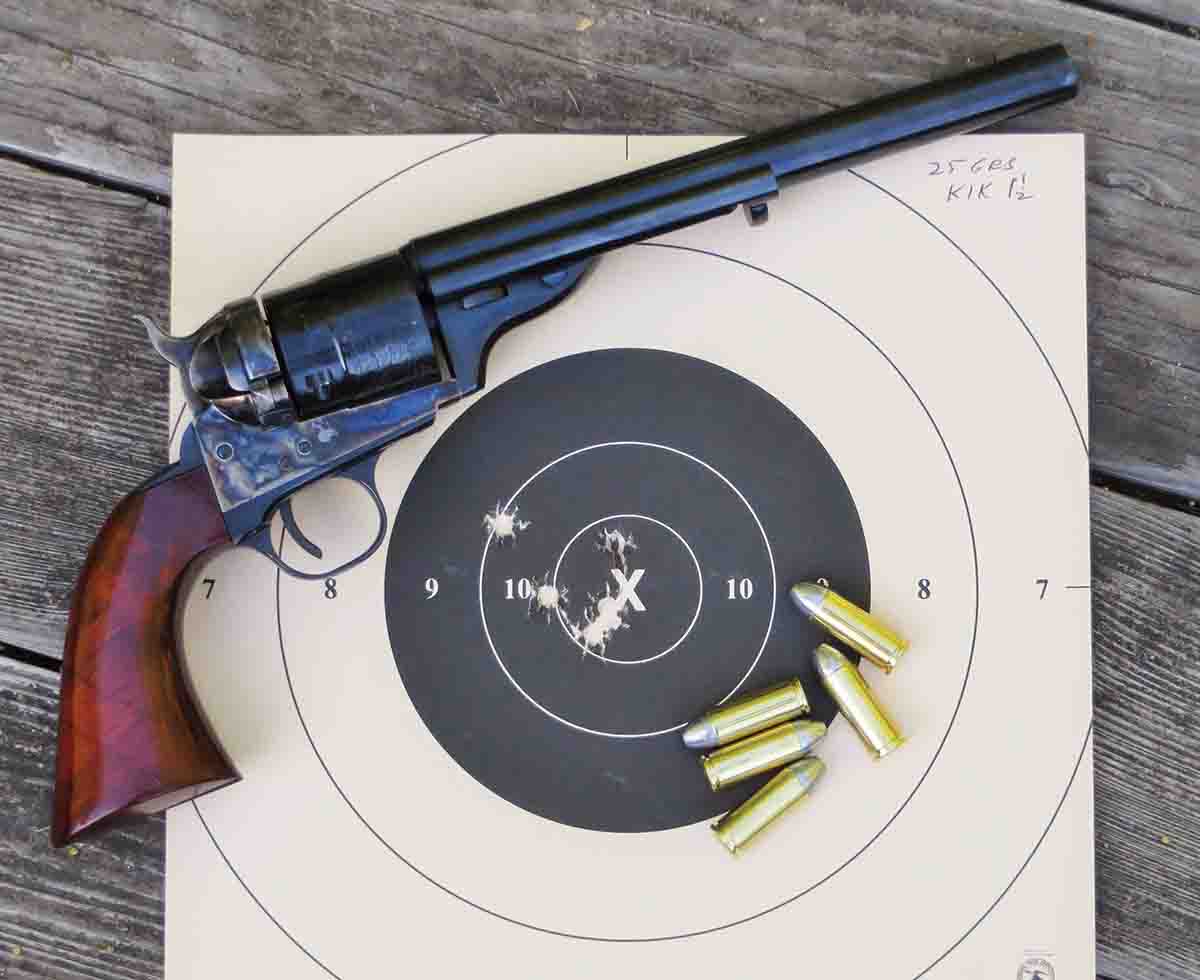
My favorite loading uses 25 grains of Olde Eynsford 11⁄2 Fg powder for an average velocity of about 768 fps out of the .44’s eight-inch barrel. That isn’t the most powerful loading, but power isn’t my main concern. Other factors in good performance outweigh power, and if I find a need for more power, I’ll probably grab a different gun.
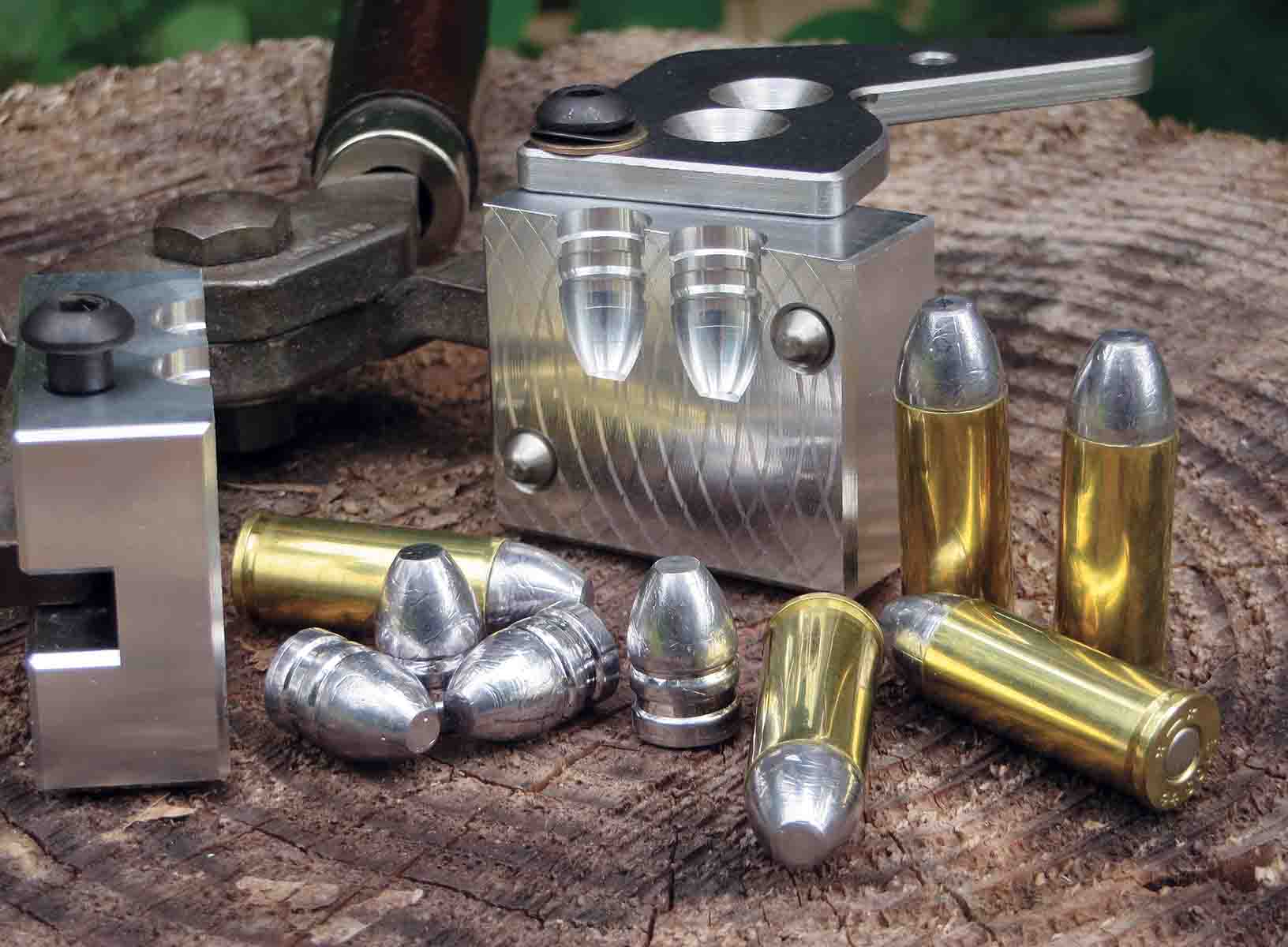
Colt .44 Black Powder Loads:
(with bullet 43-220N, 8-inch barrel)
• 25.0 grains of KIK 11⁄2 Fg (by volume) 618 fps
• 25.0 grains of Olde Eynsford 11⁄2 F (by weight) 768 fps
• 25.0 grains of Olde Eynsford 2 F (by weight) 815 fps
Good shooting combined with an authentic-like appearance is how I’ll describe this new bullet for the old .44 Colt. If this bullet interests you, or any of the long list of available bullet styles, visit the website of Accurate Molds at www.accuratemolds.com and take a good look. This bullet, again, is #43-220N and Accurate Molds does have several bullet designs made especially for black powder.


